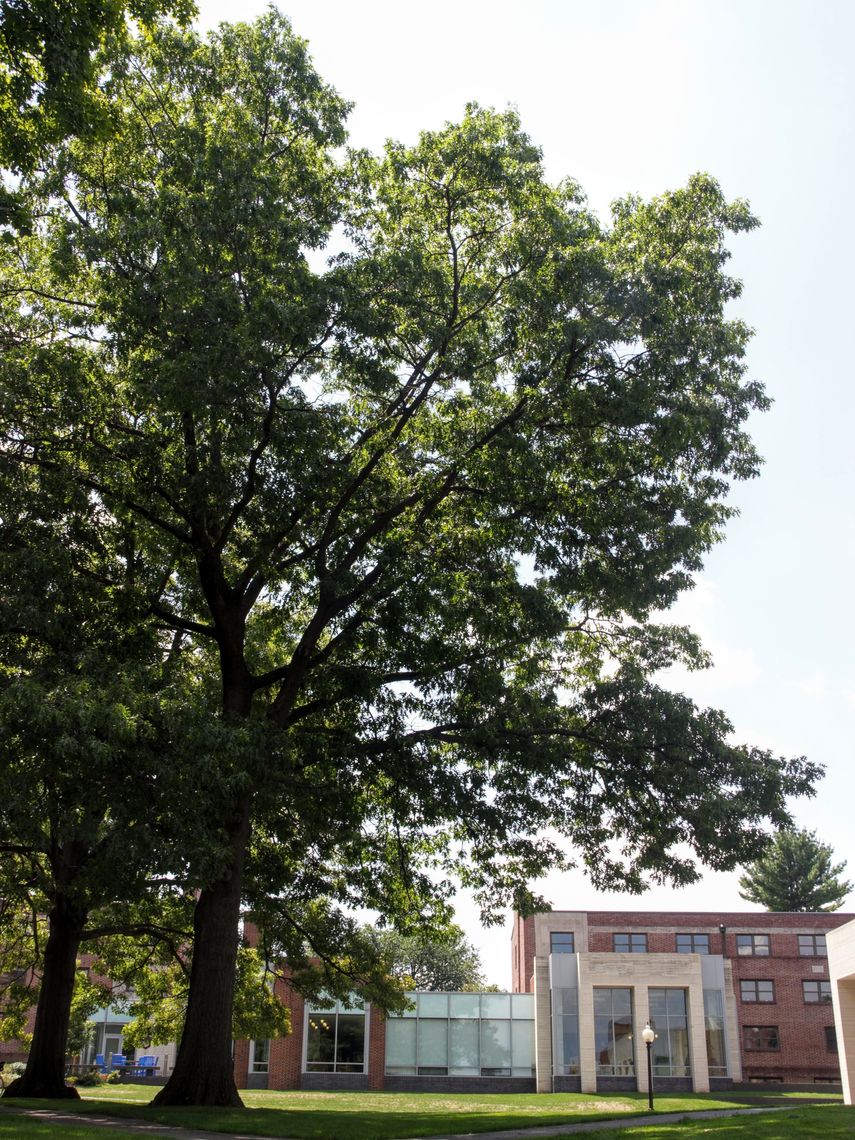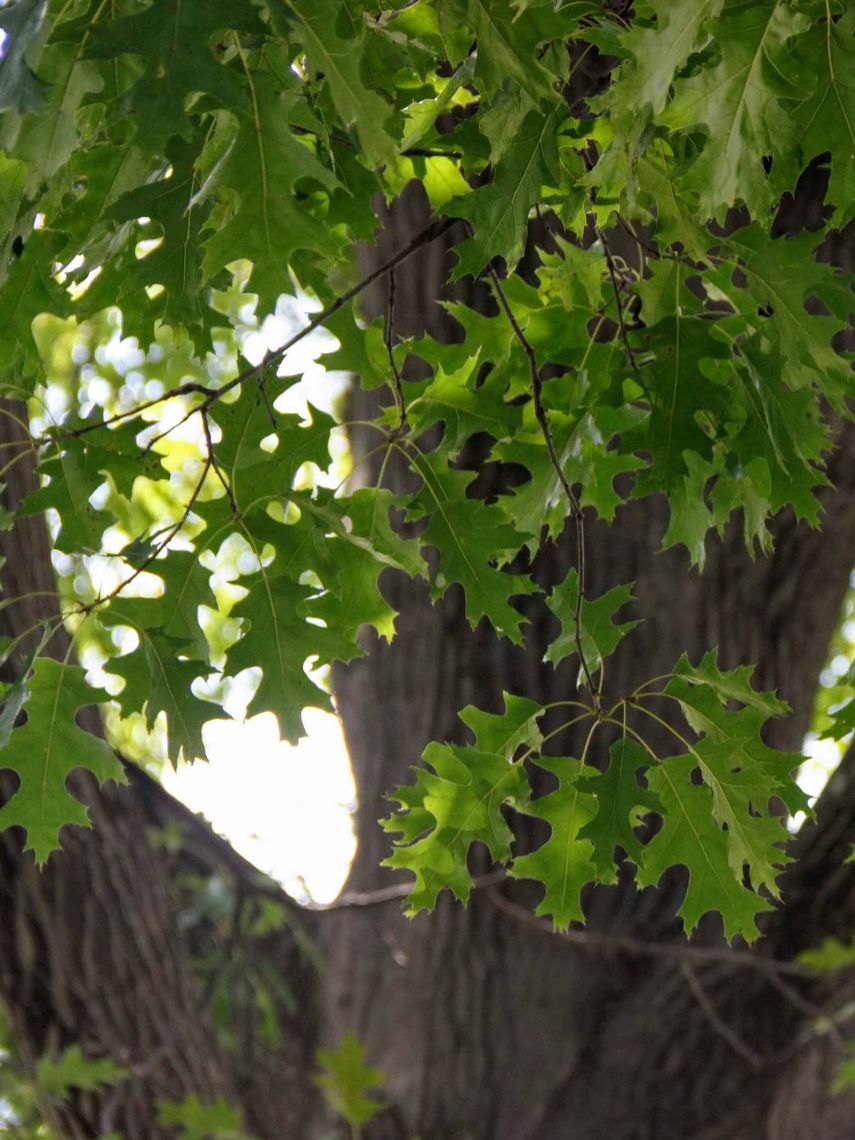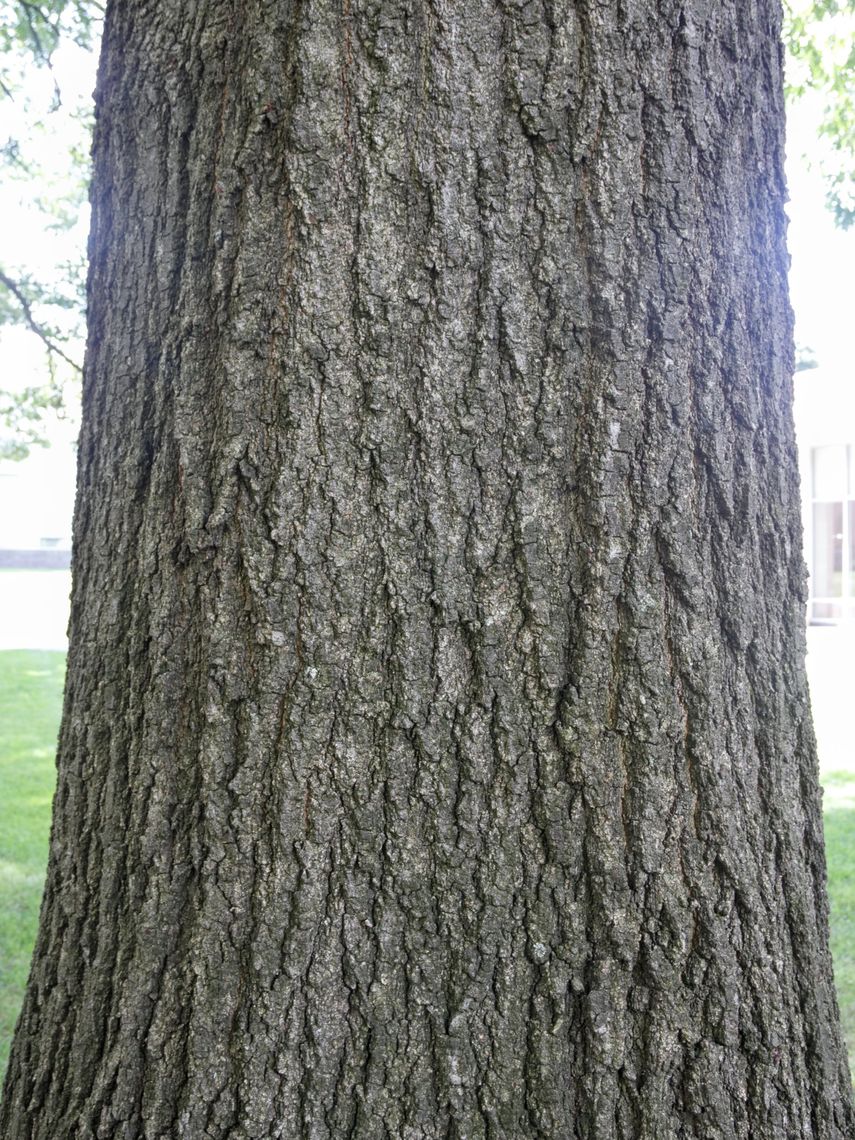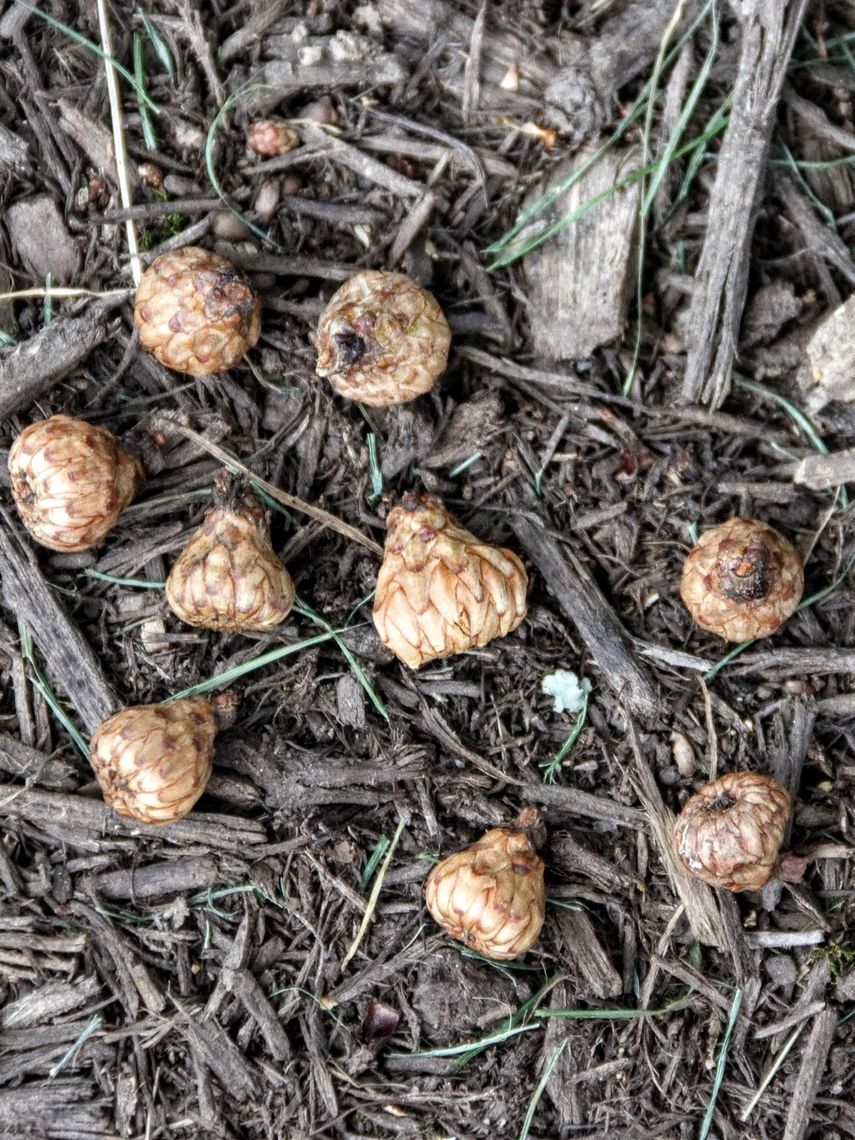Northern Red Oak (Quercus rubra)
The northern red oak is a medium-sized, rounded tree. When the tree's leaves first begin to grow in the spring, they are of a bright pink-red color and may make the tree look as if it's in bloom. These leaves have 7-11 lobes which are sharply pointed at the ends and turn bright red in the fall. The acorns on this tree are barrel-shaped with thin caps, and are among the first of the oak acorns to ripen, providing an early harvest for birds and mammals.
Family: Fagaceae (Beech)
Characteristics: The leaves are dark green and have 7-11 lobes which are sharply pointed at the tips. New spring leaves emerge pink-red. In the fall, leaves turn russet red to bright red. This tree produces insignificant yellow-green flowers that appear as catkins. Acorns are three-quarters of an inch to 1 inch long, medium brown, and have thin saucer shaped caps. Bark is dark gray and ridged and may be blocky toward the bottom. This tree has a rounded shape in both youth and maturity. It grows 60-75 feet high.
Foliage: Deciduous (leaves lost seasonally)
Geographic Origin: Eastern North America (native)
Cultivation Notes: Requires low maintenance. Does best in full sun. Prefers acidic, dry to medium moist, and well-drained soils. This tree is tolerant to salt and air pollution.
Number on Campus: 27
Sources: Dirr, Morton Arboretum, Missouri Botanical Garden




